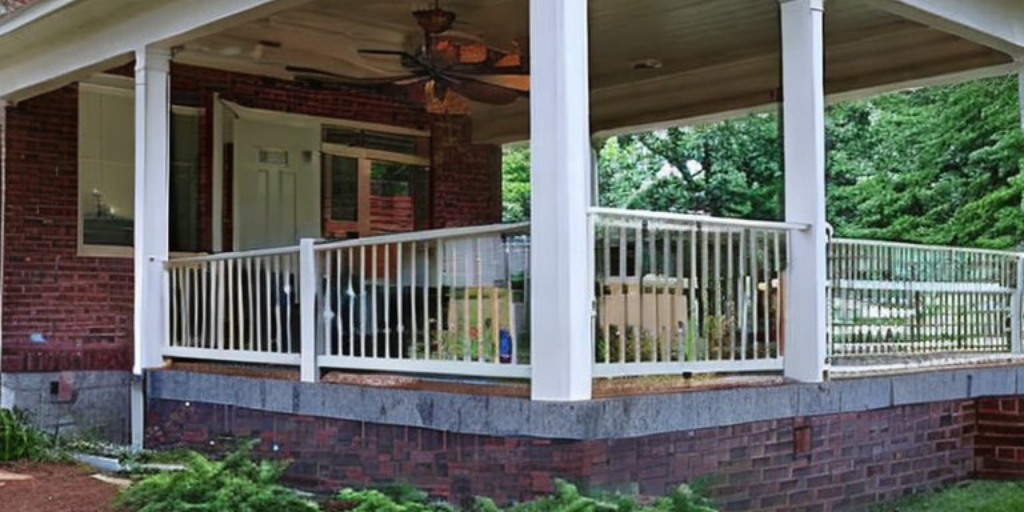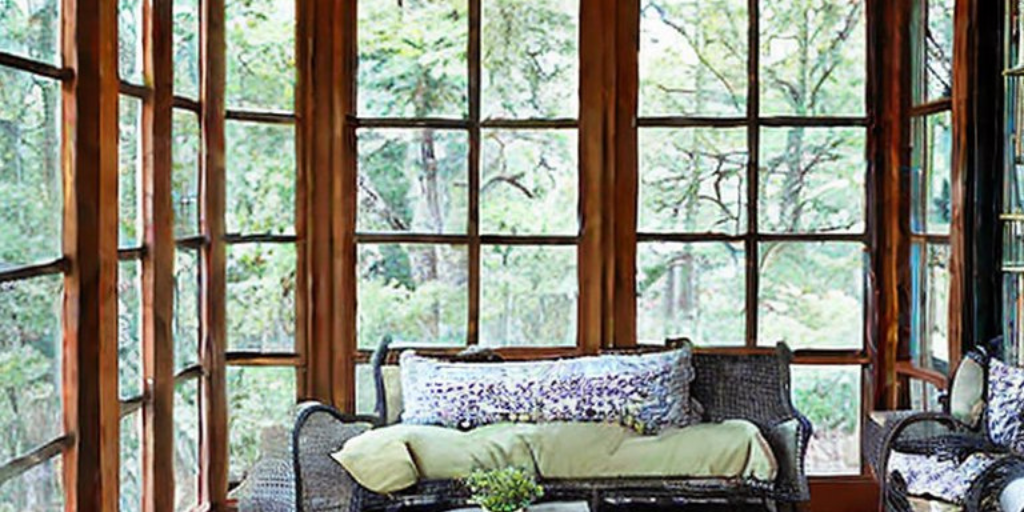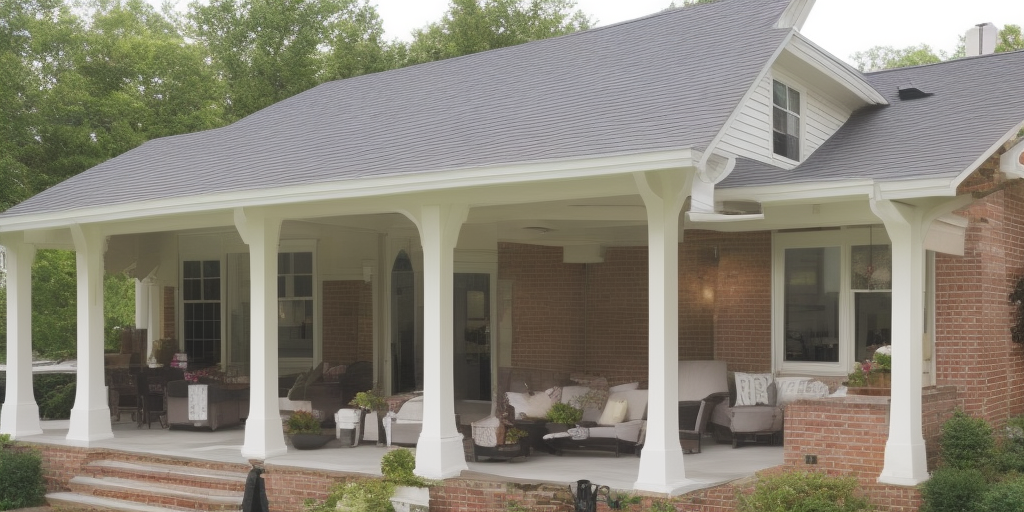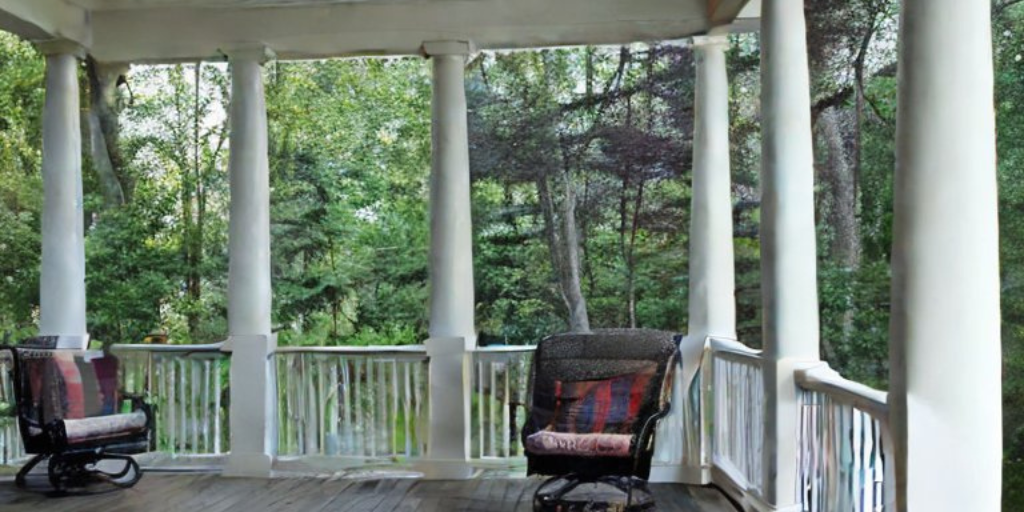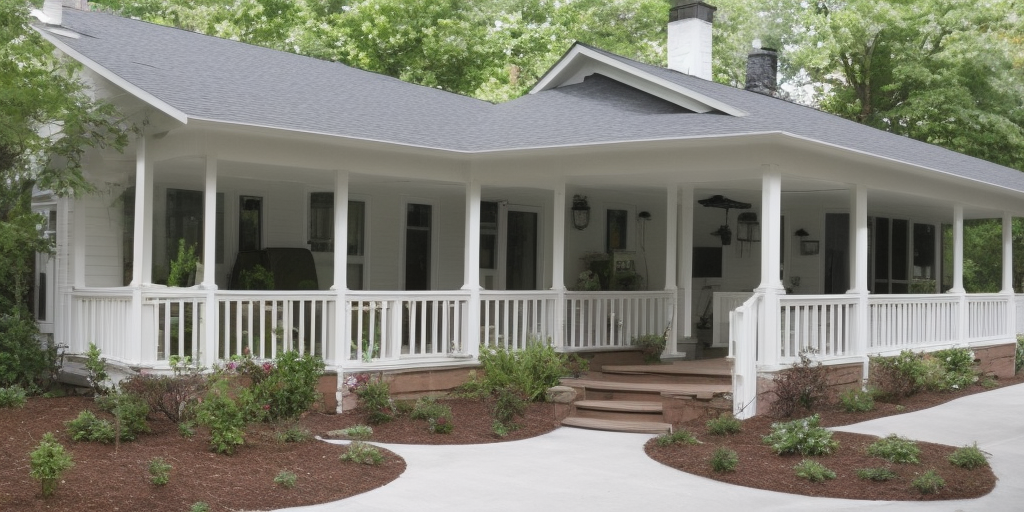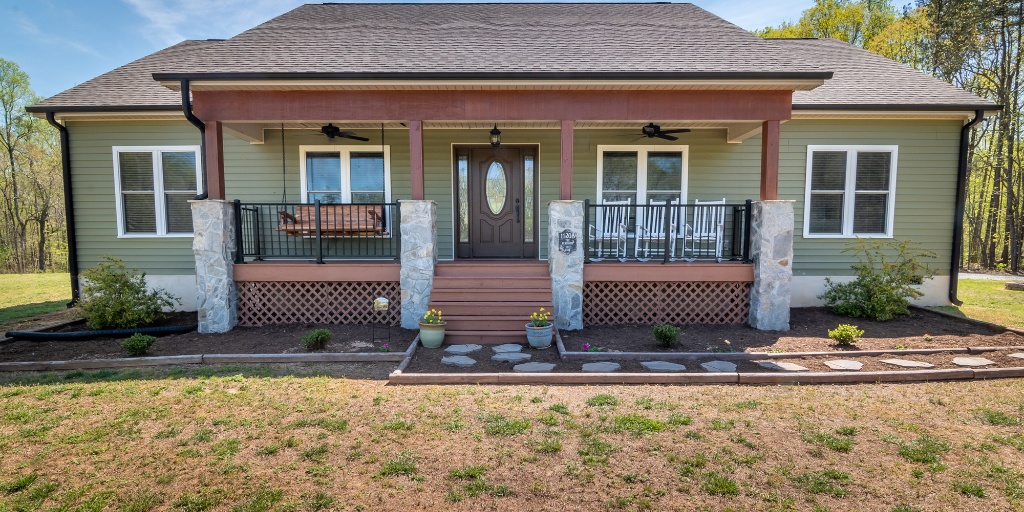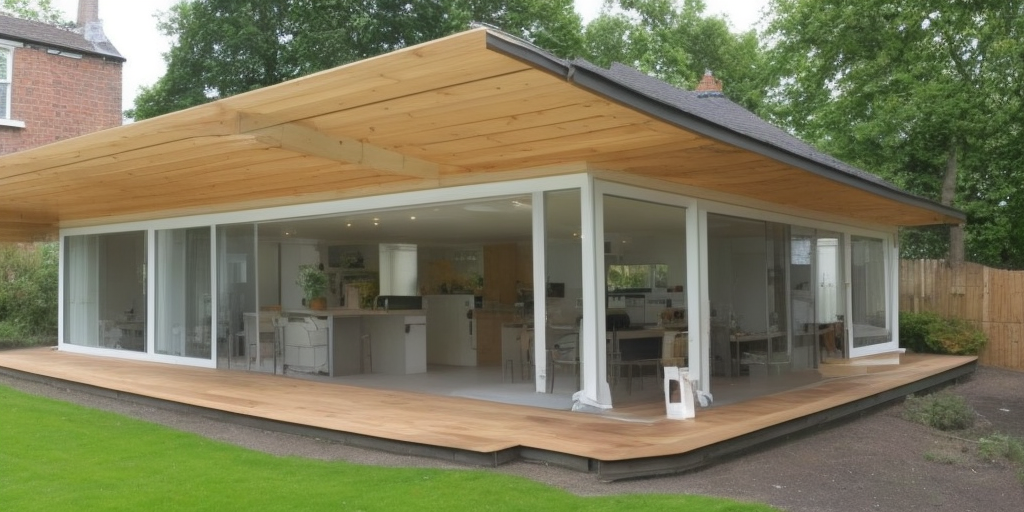Questions related to a covered porch vs. uncovered porch are understandable since both will have pros and cons. Porches are a popular feature in many homes, providing a comfortable outdoor space for relaxation and socialization.
If you are planning on building or repairing a porch, one of the most important decisions you’ll need to make is whether to go with a covered porch or an uncovered one. Each option comes with its own set of pros and cons, and choosing the right one for your home can depend on several factors. We will discuss the pros and cons of both covered and uncovered porches to help you make an informed decision.
Covered Porch vs. Uncovered Porch: Pros and Cons of Each
Contents
- 1 Covered Porch vs. Uncovered Porch: Pros and Cons of Each
- 2 What are the design considerations for a covered porch?
- 3 Can an uncovered porch be converted to a covered porch?
- 4 Can an uncovered porch be used during bad weather?
- 5 Is a covered porch more comfortable than an uncovered porch?
- 6 What are the design considerations for a covered porch?
- 7 What are the costs associated with building a covered porch?
- 8 How does a covered porch protect from the elements?
- 9 What are the different types of covered porches?
- 10 Conclusion for Covered Porch vs. Uncovered Porch
A porch is a great addition to any home, as it provides a comfortable outdoor space for relaxing, entertaining guests, and enjoying the beauty of nature. When deciding to build a porch, one of the most important considerations is whether to go with a covered porch or an uncovered one.
Each option has its own set of advantages and disadvantages, and the choice you make will depend on several factors. In this article, we will discuss the pros and cons of both covered and uncovered porches.
Covered Porch
Pros:
Protection from the Elements: The most significant advantage of a covered porch is protection from the elements. A roof over the porch provides shade during sunny days and keeps the porch dry during rainy weather.
Increased Comfort: A covered porch provides more comfort than an uncovered one, as it shields you from the wind and reduces the impact of the sun’s heat.
More Usable Space: A covered porch can be used during all seasons, which extends the usable space of your home.
Cons:
Higher Cost: Building a covered porch is generally more expensive than building an uncovered one, as it requires more materials and labor.
Limited Natural Light: A covered porch may limit the amount of natural light that enters your home, which can be a disadvantage if you enjoy natural light.
Uncovered Porch
Pros:
More Affordable: An uncovered porch is generally less expensive than a covered porch, as it requires fewer materials and less labor.
Increased Natural Light: An uncovered porch allows more natural light to enter your home, which can be a significant advantage if you enjoy natural light.
Open Air Feel: An uncovered porch provides an open-air feel, which can be more enjoyable during good weather.
Cons:
Limited Use: An uncovered porch is limited in its use during rainy or sunny days, which can be a disadvantage if you want to use your porch throughout the year.
Limited Protection: An uncovered porch provides little to no protection from the elements, which can be a disadvantage during bad weather.
In summary, choosing between a covered porch and an uncovered porch depends on several factors, including your budget, the climate of your area, and how you intend to use your porch. A covered porch provides protection from the elements and more comfort, but it is generally more expensive.
On the other hand, an uncovered porch is more affordable, provides an open-air feel, and allows more natural light, but it is limited in its use during bad weather. By considering the pros and cons of both options, you can make an informed decision and create a porch that meets your needs and enhances the beauty and functionality of your home.


What are the design considerations for a covered porch?
When designing a covered porch, there are several key considerations to keep in mind to ensure that the porch is functional, aesthetically pleasing, and meets your needs. Here are some design considerations for a covered porch:
Size and Shape: The size and shape of your porch will depend on your needs and the available space. Consider the intended use of your porch and the amount of furniture you want to include.
Roof Design: The design of the roof is an essential consideration for a covered porch. Choose a design that complements the architecture of your home and provides adequate protection from the elements.
Material Choices: The materials you choose for your porch will affect its durability, aesthetics, and maintenance requirements. Consider the advantages and disadvantages of various materials such as wood, concrete, or composite materials.
Lighting: Adequate lighting is crucial for a covered porch. Consider adding light fixtures, such as ceiling fans or recessed lighting, to ensure that your porch is well-lit and comfortable to use during the evening.
Privacy and Views: Consider the privacy and views of your porch. If you want privacy, consider adding curtains, shades, or privacy screens. If you want to enjoy the view, make sure the porch is positioned to take advantage of the scenery.
Flooring: Choose a flooring material that is durable, easy to maintain, and complements the style of your porch. Options include wood, tile, or stone.
Landscaping: Landscaping can enhance the beauty of your porch and provide privacy. Consider adding plants or hedges around the porch to create a natural boundary.
Furniture: The furniture you choose for your porch will affect its comfort and functionality. Consider adding outdoor seating, tables, and other accessories to create an inviting space.
By considering these design considerations, you can create a covered porch that meets your needs, enhances the beauty of your home, and provides a comfortable outdoor living space.
Can an uncovered porch be converted to a covered porch?
Yes, an uncovered porch can be converted to a covered porch. However, the process of converting an uncovered porch to a covered porch will depend on the specific design and structure of the porch.
The first step in converting an uncovered porch to a covered porch is to determine the size and design of the new porch. This will depend on your needs, budget, and available space. You may need to work with a contractor or architect to create a design that is structurally sound and meets local building codes.
Once you have a design in place, the next step is to construct the roof and support structure. This may involve adding posts or columns, as well as installing a roof deck, roof trusses, and roofing materials.
During the construction process, it is important to consider other design elements such as lighting, electrical outlets, and ceiling fans, as well as the type of flooring and finishes you want to use.
Converting an uncovered porch to a covered porch can be a significant home improvement project, and it is important to work with a qualified contractor who has experience with this type of renovation. Additionally, you will need to obtain any necessary permits and inspections from your local building department before beginning the project.
Overall, while converting an uncovered porch to a covered porch can be a complex process, the end result can be a beautiful and functional outdoor living space that adds value to your home.
Can an uncovered porch be used during bad weather?
An uncovered porch is not typically designed to be used during bad weather, as it does not provide adequate protection from rain, wind, or other harsh elements. However, there are some steps you can take to make an uncovered porch more comfortable and usable during inclement weather.
One option is to install retractable awnings or shades that can be extended during rainy or sunny weather to provide temporary protection. You can also consider adding a pergola or trellis with a canopy, which will provide some shelter from the elements while still allowing air to circulate.
Another option is to use weather-resistant furniture and accessories, such as cushions and rugs, that can withstand exposure to moisture and humidity. Additionally, you can add heaters or fire pits to the porch to provide warmth during colder weather.
It is important to keep in mind, however, that an uncovered porch is not designed to provide complete protection from bad weather, and it is not recommended to use the porch during severe weather events such as thunderstorms, hurricanes, or tornadoes. In these cases, it is best to stay indoors and seek shelter until the weather improves.
Overall, while an uncovered porch may not be ideal for use during bad weather, there are steps you can take to make it more comfortable and usable in less severe weather conditions.
Is a covered porch more comfortable than an uncovered porch?
Generally speaking, a covered porch is more comfortable than an uncovered porch. This is because a covered porch provides protection from the elements such as rain, sun, and wind, which can make it more enjoyable to spend time outdoors.
In the summer months, a covered porch can provide shade and cool breezes, making it a comfortable place to relax and entertain guests. In the fall and spring, a covered porch can provide shelter from rain and wind, allowing you to enjoy the outdoors even on cooler days.
In addition to providing protection from the elements, a covered porch can also be more comfortable in terms of the furniture and accessories you can use. With a covered porch, you can choose comfortable and stylish furniture, such as outdoor sofas, chairs, and dining sets, without worrying about exposure to the elements.
However, the design and construction of the porch can also affect its comfort level. A poorly designed or constructed covered porch may not be comfortable or functional, while a well-designed uncovered porch can provide a comfortable outdoor living space.
Overall, while the comfort level of a covered porch may depend on several factors, including the weather and design, it is generally considered to be more comfortable than an uncovered porch due to its ability to provide protection from the elements.
What are the design considerations for a covered porch?
Designing a covered porch involves a number of considerations to ensure that the porch is functional, aesthetically pleasing, and structurally sound. Here are some design considerations for a covered porch:
Purpose: Determine how you plan to use the porch, such as for dining, entertaining, or relaxing, and design the space accordingly.
Size: Consider the size of the porch in relation to the size of your home and outdoor space. Make sure the porch is large enough to accommodate your desired activities, but not so large that it overwhelms the rest of the yard.
Shape: Decide on the shape of the porch, such as a square, rectangle, or oval, and make sure it fits with the style and architecture of your home.
Roof: Determine the type of roof you want, such as a flat or pitched roof, and choose a roofing material that complements the style of your home and provides adequate protection from the elements.
Lighting: Consider the type and placement of lighting, such as overhead lights or sconces, to ensure that the porch is well-lit and functional at night.
Flooring: Choose a flooring material that is durable, slip-resistant, and complements the style of your home, such as wood, tile, or concrete.
Ceiling: Decide on the type of ceiling, such as a wood or beadboard ceiling, and make sure it is properly ventilated to prevent moisture buildup.
Furniture: Choose comfortable and stylish furniture that is appropriate for the size and style of the porch, and make sure it is weather-resistant and easy to clean.
Accessories: Add accessories such as pillows, rugs, and curtains to create a cozy and inviting atmosphere.
Building codes: Make sure to comply with local building codes and obtain any necessary permits before building your porch.
By considering these design considerations, you can create a covered porch that is functional, stylish, and comfortable for you and your family to enjoy.
What are the costs associated with building a covered porch?
The cost of building a covered porch can vary depending on several factors, including the size, design, and materials used. Here are some of the costs you may incur when building a covered porch:
Materials: The cost of materials can vary widely depending on the type and quality of materials used. For example, a wood porch may be less expensive than a porch made of composite materials or stone. In general, the materials for a covered porch can range from $15 to $60 per square foot.
Labor: Labor costs can vary depending on the complexity of the project and the experience of the contractor. In general, the cost of labor for building a covered porch can range from $10 to $50 per square foot.
Permits and Fees: Depending on the location and scope of the project, you may need to obtain permits from your local government and pay associated fees. These costs can range from a few hundred dollars to several thousand dollars, depending on your location and the extent of the project.
Design and Planning: Depending on the complexity of the project, you may need to hire an architect or designer to create plans and blueprints for your porch. These costs can range from a few hundred to several thousand dollars.
Maintenance: Once the porch is built, you will need to maintain it to keep it in good condition. This may include cleaning, sealing, and repairing the porch as needed, which can add to the overall cost over time.
Overall, the cost of building a covered porch can range from several thousand dollars to tens of thousands of dollars, depending on the size, design, and materials used. It is important to carefully consider your budget and priorities before embarking on a project of this scale.
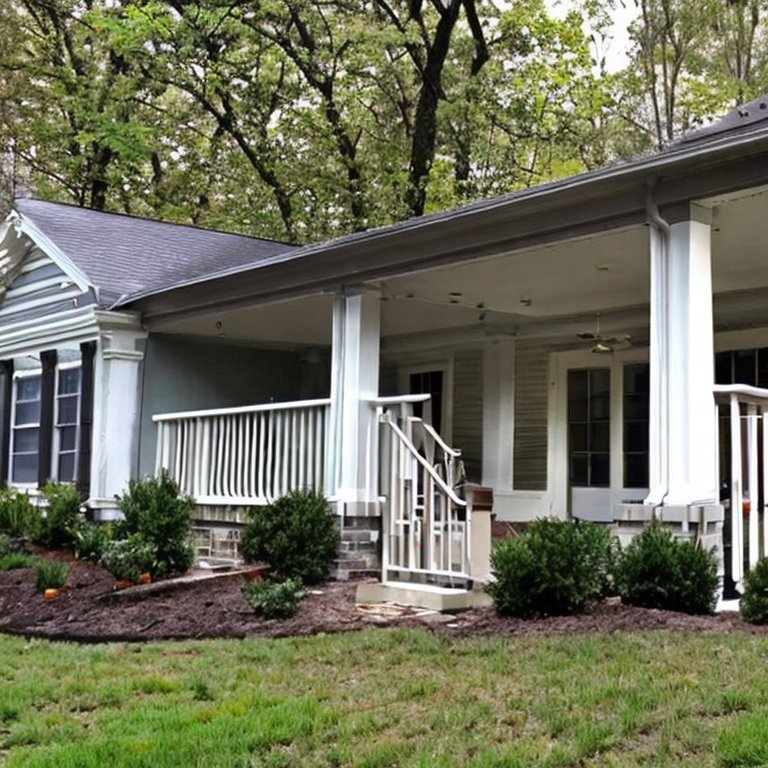

How does a covered porch protect from the elements?
A covered porch provides protection from the elements by shielding you from the sun, rain, and other weather conditions. Here are some of the ways that a covered porch can provide protection:
Roof: A covered porch typically has a roof that provides shade and shelter from the sun and rain. The roof can be made of various materials such as metal, asphalt shingles, or tiles, and can be pitched or flat depending on the style of the porch.
Overhang: The roof of the covered porch extends beyond the edge of the porch, creating an overhang that helps to direct rainwater away from the porch and prevent it from seeping into the porch.
Walls: Some covered porches may have walls or screens to further protect from the elements, such as wind or insects.
Ventilation: Proper ventilation is essential to prevent moisture buildup and mold growth. A covered porch may have vents or fans installed to promote air circulation and keep the space comfortable and dry.
Materials: The materials used to build a covered porch can also contribute to its ability to protect from the elements. For example, using water-resistant materials for the roof and walls can help prevent water damage and prolong the life of the porch.
By providing shade and shelter, a covered porch can create a comfortable outdoor living space that can be enjoyed in a variety of weather conditions.
What are the different types of covered porches?
There are many different types of covered porches, each with its own unique style and features. Here are some of the most common types of covered porches:
Front porch: A front porch is located at the front of a house and is typically designed to provide a welcoming entrance to the home. It can be small and simple or large and grand, depending on the style of the house.
Back porch: A back porch is located at the back of a house and is often designed for outdoor entertaining and relaxation. It can be connected to a deck or patio and may include features such as a grill or outdoor kitchen.
Wraparound porch: A wraparound porch wraps around two or more sides of a house and provides a large, expansive outdoor living space. It is often associated with traditional or Victorian-style homes.
Screened porch: A screened porch is a covered porch that is enclosed with screens to keep insects and other pests out. It provides a comfortable outdoor living space while still offering protection from the elements.
Sun porch: A sun porch is a covered porch that is designed to let in a lot of natural light. It may have large windows or skylights and is often used as a cozy indoor-outdoor living space.
Sleeping porch: A sleeping porch is a covered porch that is designed for sleeping outdoors. It may have a bed or hammock and is often screened to keep bugs out.
Patio porch: A patio porch is a covered porch that is built on a patio or other outdoor living area. It can be used for outdoor dining or relaxing and may include features such as a fireplace or outdoor kitchen.
Each type of covered porch has its own unique design and features, allowing you to create an outdoor living space that meets your specific needs and style preferences.
Conclusion for Covered Porch vs. Uncovered Porch
In conclusion, choosing between a covered porch vs. uncovered porch ultimately comes down to your personal preferences and needs. A covered porch provides protection from the elements and allows for use during rainy or sunny days, while an uncovered porch offers an open-air feel and can be more cost-effective.
Ultimately, the decision will depend on factors such as climate, intended use, and budget. By considering the pros and cons of both options, you can make an informed decision and create a porch that meets your needs and enhances the beauty and functionality of your home.
